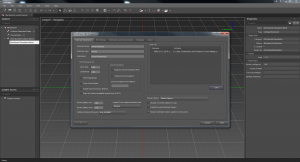Vortex is a simulation platform used to create high fidelity, interactive and realtime virtual environment. The requirement was to make it compatible with the latest HLA standard, DIS and V-DIS.
coreDS™ is used on various projects by dsTools engineers to reduce implementation costs and provide full flexibility to the end users.
The Vortex simulation engine model accurately the physical motion of these objects interacting with the environment they are in combined with visuals, Human in the Loop and control systems integration. CM-Labs sell Vortex as a simulation platform for OEMs and integrators, or as part of a hardware simulation system often used for training. The Vortex capability can also be embedded in existing software projects as part of a larger simulation package.

Using coreDS™, dsTools was able to easily add the desired distributed simulation capability to Vortex with minimal support from the Vortex engineering team. Using the predefined coreDS™ GUI’s skinned to match Vortex look and feel, the connection configuration for HLA and DIS was up and running in no time. Most of the efforts were spent on defining the appropriate Vortex internal data structure facilitating the mapping between Vortex and the rest of the federation.
Every component created in Vortex as a number of properties (variables) that can now be mapped with the attributes of the FOM when using a HLA connection or with the PDU’s when operating in a DIS environment. coreDS™ handles the RTI connection, publishes Vortex updates and receive data of interest from the rest of the federation. The flexibility of the solution allowed for up-sampling and downsampling of the data exchange rate keeping the system from pushing too much information.
The solution implemented for CM-Labs has been done with the end user in mind. Vortex users can decide on the FOM to be used, the RTI to connect to, the time management configuration, personalize their mapping not having to think about data marshalling and a lot more. All of it can be done from Vortex GUI’s simply by accessing the distributed simulation component of the application.


